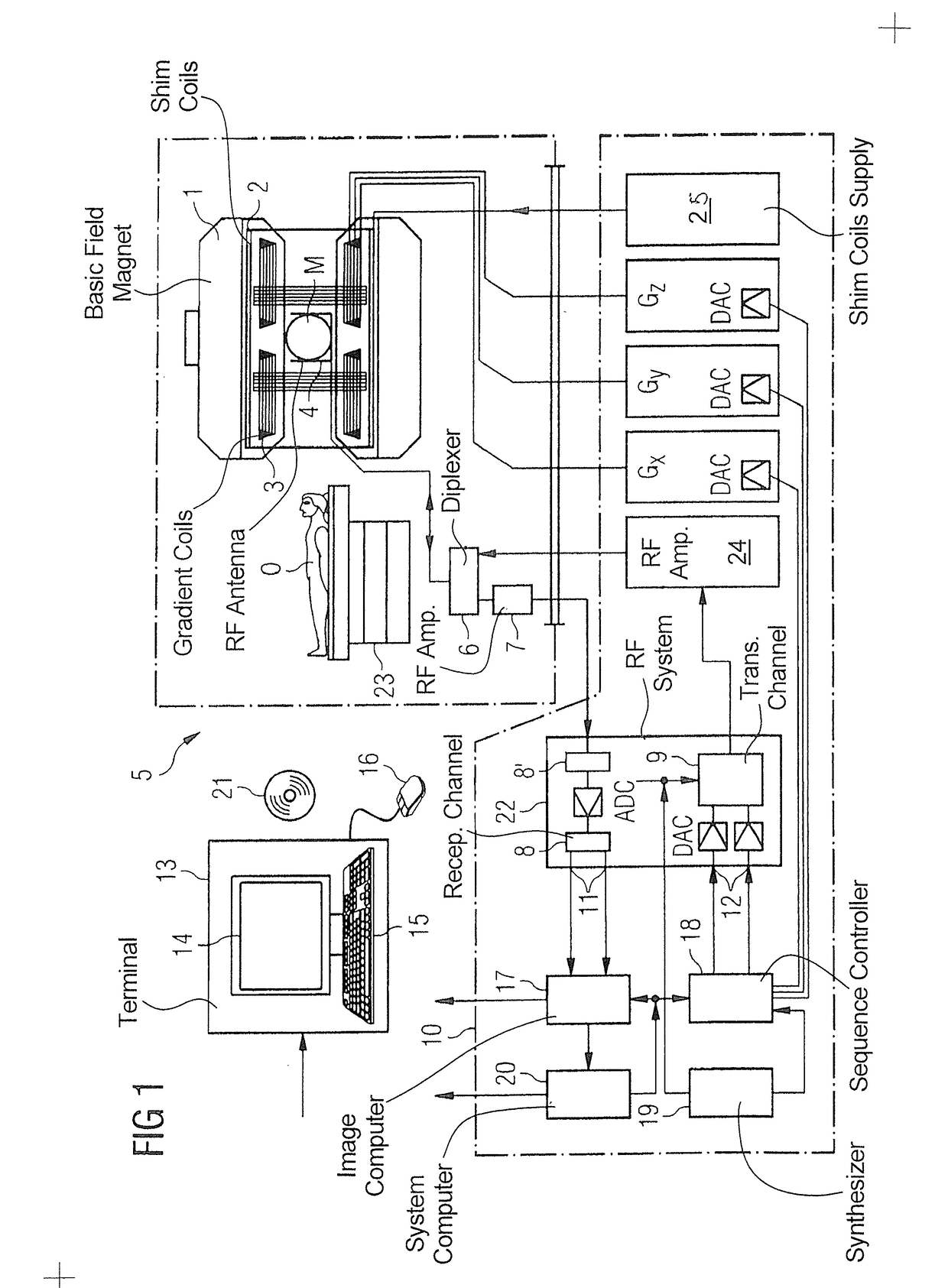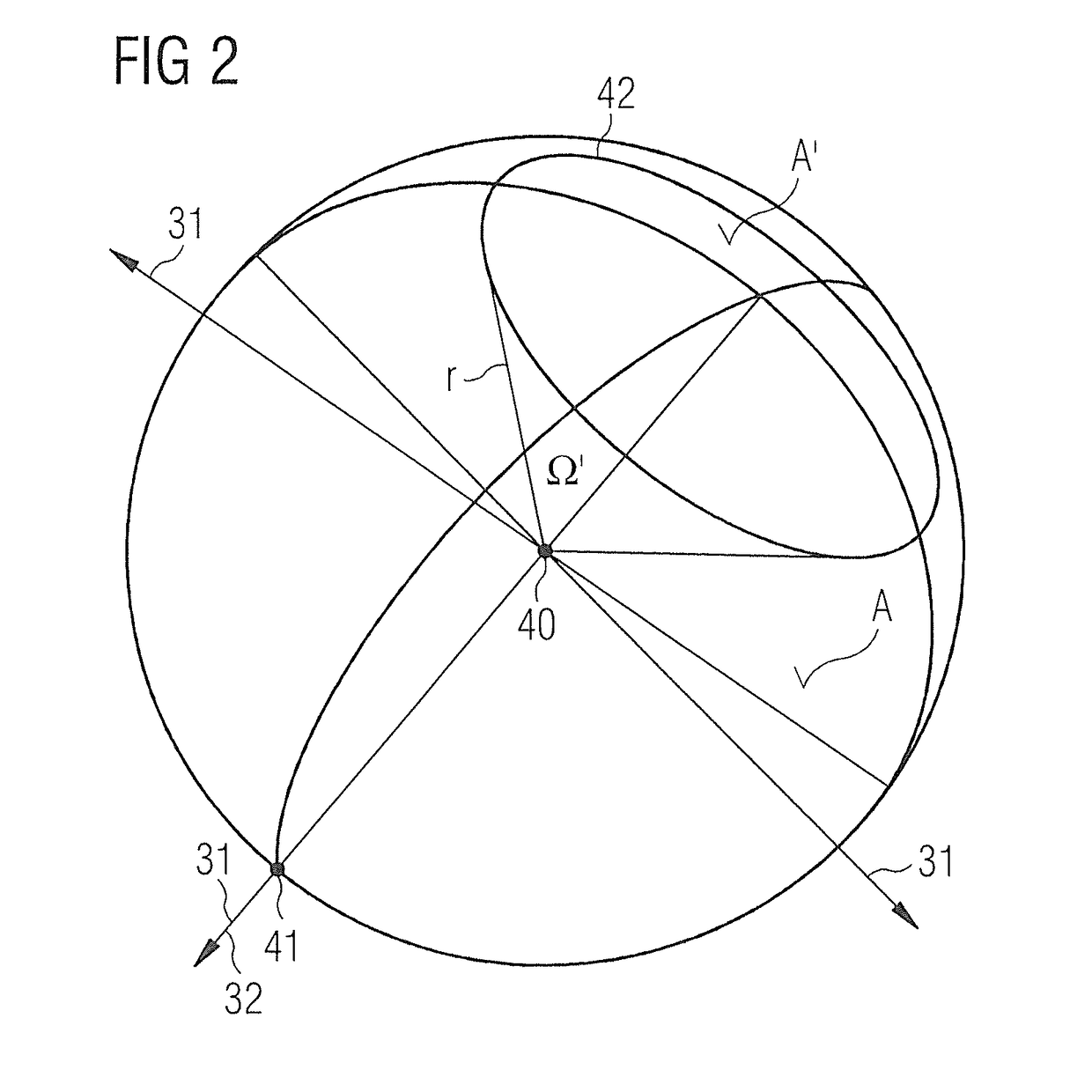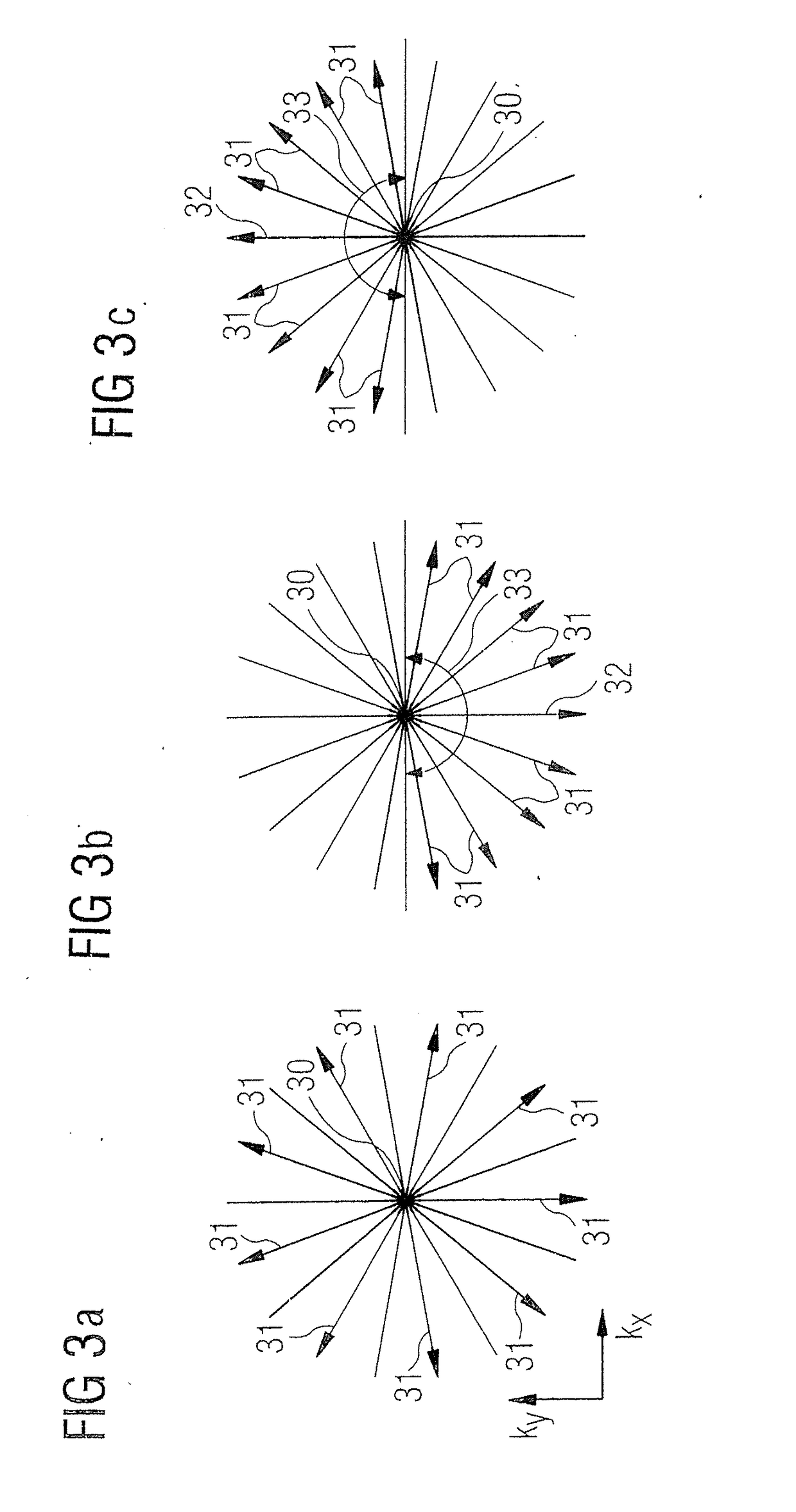Method and apparatus for generating a magnetic resonance image with radio collection of magnetic resonance data to avoid image artifacts
a magnetic resonance and data collection technology, applied in the field of reconstruction of magnetic resonance images, can solve the problems of more sensitive system failures in the radio collection of mr data, and achieve the effect of not needing to extend the scan tim
- Summary
- Abstract
- Description
- Claims
- Application Information
AI Technical Summary
Benefits of technology
Problems solved by technology
Method used
Image
Examples
first embodiment
[0072]FIG. 4 shows a flowchart of the method according to the invention.
[0073]In step S1, a primary readout direction and with it an associated field of a solid angle (three-dimensional case) or angular field (two-dimensional case) is determined, in the center of which is the primary readout direction. In step S2 trajectories are determined and in step S3 the MR data is collected along these trajectories.
[0074]Steps S4 to S6 examine the MR data which is used for the reconstruction of the MR image. To this end, step S4 examines whether the readout direction of the trajectory is within the field of a solid angle defined in step S1 for each trajectory. In step S5 the MR data are identified as the only MR data to be taken into consideration for the reconstruction of the MR image if this is the case.
[0075]If it is recognized that all the trajectories have been examined in step S6, the MR image is reconstructed in step S7 on the basis of only the MR data identified in step S5.
second embodiment
[0076]FIG. 5 shows a flowchart of the method according to the invention.
[0077]In step S11, as in step S1 (FIG. 4), a primary readout direction and with it an associated field of a solid angle (three-dimensional case) or angular field (two-dimensional case) is determined, in the center of which is the primary readout direction. Step S12 determines trajectories and the sequence in which these trajectories are to be scanned.
[0078]Subsequently, steps S13 to S15 are performed for all the predetermined trajectories. Step S13 examines whether the readout direction of the respective trajectory is outside the field of a solid angle and / or angular field in step S11. The original readout direction in step S14 is only inverted or reversed if this is the case. Subsequently, MR data is collected in the readout direction along the respective trajectory in step S15.
[0079]Step S16 examines whether all the trajectories determined in step S12 have been scanned. If so, an MR image is reconstructed on t...
PUM
 Login to View More
Login to View More Abstract
Description
Claims
Application Information
 Login to View More
Login to View More - R&D
- Intellectual Property
- Life Sciences
- Materials
- Tech Scout
- Unparalleled Data Quality
- Higher Quality Content
- 60% Fewer Hallucinations
Browse by: Latest US Patents, China's latest patents, Technical Efficacy Thesaurus, Application Domain, Technology Topic, Popular Technical Reports.
© 2025 PatSnap. All rights reserved.Legal|Privacy policy|Modern Slavery Act Transparency Statement|Sitemap|About US| Contact US: help@patsnap.com



